Abarth 500 595 695 vs Ford Puma – Which one offers the better deal?
Two cars, one duel: Abarth 500 595 695 meets Ford Puma.
Which one wins in performance, efficiency and value for money? Find out now!
Costs and Efficiency:
Price and efficiency are key factors when choosing a car – and this is often where the real differences emerge.
Ford Puma has a noticeable advantage in terms of price – it starts at 24800 £, while the Abarth 500 595 695 costs 32600 £. That’s a price difference of around 7791 £.
In terms of energy consumption, the advantage goes to the Ford Puma: with 13.10 kWh per 100 km, it’s noticeable more efficient than the Abarth 500 595 695 with 17.10 kWh. That’s a difference of about 4 kWh.
As for range, the Ford Puma performs noticeable better – achieving up to 376 km, about 111 km more than the Abarth 500 595 695.
Engine and Performance:
Power, torque and acceleration say a lot about how a car feels on the road. This is where you see which model delivers more driving dynamics.
When it comes to engine power, the Ford Puma has a barely noticeable edge – offering 168 HP compared to 155 HP. That’s roughly 13 HP more horsepower.
In acceleration from 0 to 100 km/h, the Abarth 500 595 695 is minimal quicker – completing the sprint in 7 s, while the Ford Puma takes 7.40 s. That’s about 0.40 s faster.
In terms of top speed, the Ford Puma performs noticeable better – reaching 210 km/h, while the Abarth 500 595 695 tops out at 155 km/h. The difference is around 55 km/h.
There’s also a difference in torque: Ford Puma pulls somewhat stronger with 290 Nm compared to 235 Nm. That’s about 55 Nm difference.
Space and Everyday Use:
Beyond pure performance, interior space and usability matter most in daily life. This is where you see which car is more practical and versatile.
Seats: Ford Puma offers slightly more seating capacity – 5 vs 4.
In curb weight, Ford Puma is slight lighter – 1316 kg compared to 1410 kg. The difference is around 94 kg.
In terms of boot space, the Ford Puma offers decisively more room – 523 L compared to 185 L. That’s a difference of about 338 L.
In maximum load capacity, the Ford Puma performs decisively better – up to 1283 L, which is about 733 L more than the Abarth 500 595 695.
When it comes to payload, Ford Puma a bit takes the win – 469 kg compared to 385 kg. That’s a difference of about 84 kg.
Who wins the race?
The Ford Puma proves to be outperforms in nearly all aspects and therefore becomes our DriveDuel Champion!
Ford Puma is the better all-rounder in this comparison.
 @ Ford Motor Company / Ford Media Center
@ Ford Motor Company / Ford Media Center
Ford Puma
Abarth 500 595 695
The Abarth 500, particularly in its 595 and 695 renditions, captures the spirit of Italian motoring with its compact yet aggressive design. Known for its lively performance and distinctive styling, this little powerhouse is a joy to drive, offering an engaging experience that appeals to enthusiasts. With its rich motorsport heritage, the Abarth 500 embodies the essence of fun and excitement on both the streets and the race track.
details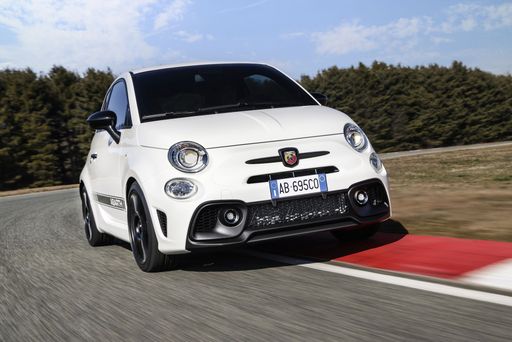 @ Abarth / Stellantis Media
@ Abarth / Stellantis Media
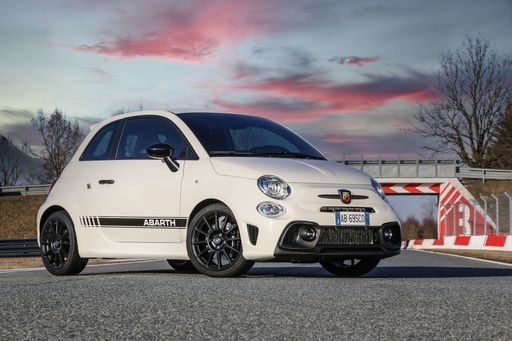 @ Abarth / Stellantis Media
@ Abarth / Stellantis Media
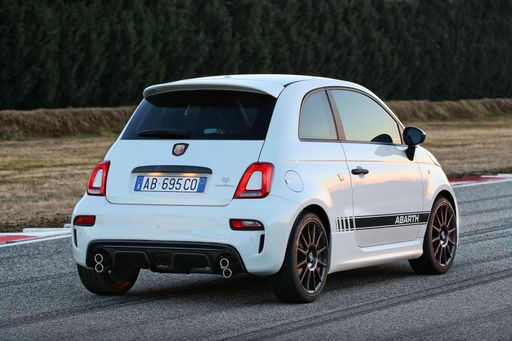 @ Abarth / Stellantis Media
@ Abarth / Stellantis Media
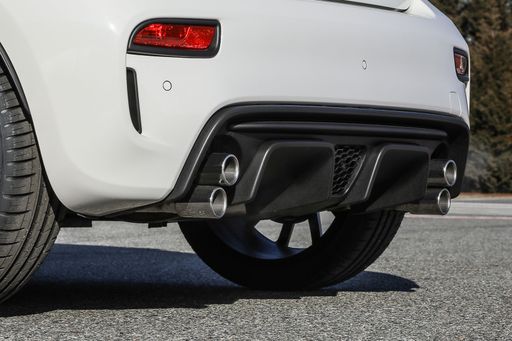 @ Abarth / Stellantis Media
@ Abarth / Stellantis Media
 @ Abarth / Stellantis Media
@ Abarth / Stellantis Media
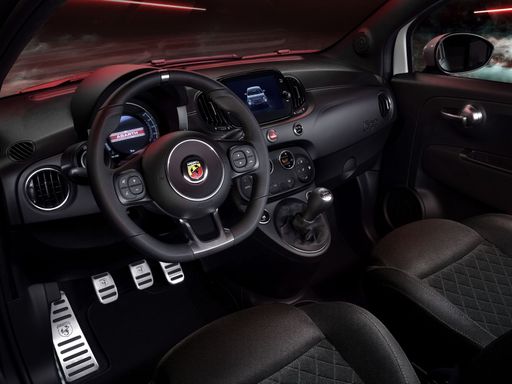 @ Abarth / Stellantis Media
@ Abarth / Stellantis Media
Ford Puma
The Ford Puma presents itself as a stylish compact SUV with a distinctive design that combines practicality with a dynamic driving experience. Its sleek lines and sporty aesthetics make it stand out on the road, while the interior offers a comfortable and tech-savvy environment. With an emphasis on efficiency and a smooth drive, the Ford Puma is well-suited for both urban commutes and countryside adventures.
details @ Ford Motor Company / Ford Media Center
@ Ford Motor Company / Ford Media Center
 @ Ford Motor Company / Ford Media Center
@ Ford Motor Company / Ford Media Center
 @ Ford Motor Company / Ford Media Center
@ Ford Motor Company / Ford Media Center
 @ Ford Motor Company / Ford Media Center
@ Ford Motor Company / Ford Media Center
 @ Abarth / Stellantis Media
@ Abarth / Stellantis Media
|
 @ Ford Motor Company / Ford Media Center
@ Ford Motor Company / Ford Media Center
|
|
|
|
Costs and Consumption |
|
|---|---|
|
Price
32600 - 39400 £
|
Price
24800 - 36300 £
|
|
Consumption L/100km
-
|
Consumption L/100km
5.4 - 5.9 L
|
|
Consumption kWh/100km
17.1 - 18.8 kWh
|
Consumption kWh/100km
13.1 - 13.9 kWh
|
|
Electric Range
242 - 265 km
|
Electric Range
361 - 376 km
|
|
Battery Capacity
37.80 kWh
|
Battery Capacity
43 kWh
|
|
co2
0 g/km
|
co2
0 - 135 g/km
|
|
Fuel tank capacity
-
|
Fuel tank capacity
42 L
|
Dimensions and Body |
|
|---|---|
|
Body Type
Hatchback
|
Body Type
SUV
|
|
Seats
4
|
Seats
5
|
|
Doors
3
|
Doors
5
|
|
Curb weight
1410 - 1435 kg
|
Curb weight
1316 - 1563 kg
|
|
Trunk capacity
185 L
|
Trunk capacity
456 - 523 L
|
|
Length
3673 mm
|
Length
4186 - 4226 mm
|
|
Width
1682 mm
|
Width
1805 mm
|
|
Height
1518 mm
|
Height
1550 - 1555 mm
|
|
Max trunk capacity
550 L
|
Max trunk capacity
1216 - 1283 L
|
|
Payload
370 - 385 kg
|
Payload
367 - 469 kg
|
Engine and Performance |
|
|---|---|
|
Engine Type
Electric
|
Engine Type
Electric, Petrol MHEV
|
|
Transmission
Automatic
|
Transmission
Automatic, Manuel
|
|
Transmission Detail
-
|
Transmission Detail
Reduction Gearbox, Manual Gearbox, Dual-Clutch Automatic
|
|
Drive Type
Front-Wheel Drive
|
Drive Type
Front-Wheel Drive
|
|
Power HP
155 HP
|
Power HP
125 - 168 HP
|
|
Acceleration 0-100km/h
7 s
|
Acceleration 0-100km/h
7.4 - 9.8 s
|
|
Max Speed
155 km/h
|
Max Speed
160 - 210 km/h
|
|
Torque
235 Nm
|
Torque
170 - 290 Nm
|
|
Number of Cylinders
-
|
Number of Cylinders
3
|
|
Power kW
114 kW
|
Power kW
92 - 124 kW
|
|
Engine capacity
-
|
Engine capacity
999 cm3
|
General |
|
|---|---|
|
Model Year
2023
|
Model Year
2025
|
|
CO2 Efficiency Class
A
|
CO2 Efficiency Class
A, D
|
|
Brand
Abarth
|
Brand
Ford
|
Is the Abarth 500 595 695 offered with different drivetrains?
The Abarth 500 595 695 is offered with Front-Wheel Drive.
The prices and data displayed are estimates based on German list prices and may vary by country. This information is not legally binding.
